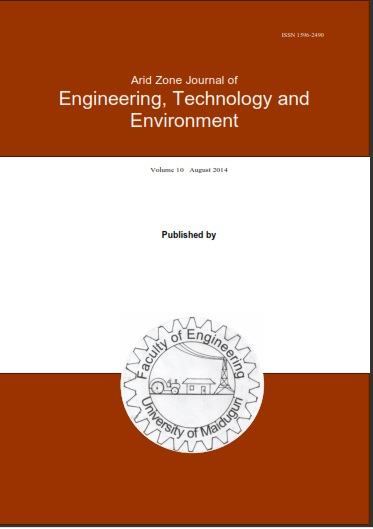Abstract
This study was conducted to model the field efficiency of tine harrow on clay-loam soil in Abia State using response surface methodology. This is to assist farmers and operators of the implement to evaluate and probably decide on appropriate harrowing implement depending on the type of soil for their seed bed preparation for efficient production at negligible energy loss. The operational speed (6-8 km/hr.), effective working width (60- 180 cm) and depth of cut (5-10 cm) were adopted as independent factors for the field efficiency study of the tine harrow. Results revealed that the highest field efficiency of 98.40% was recorded when the harrow was operated at the depth of 10cm, speed of 6km/hr. and effective working with of 180cm. The quadratic model was significant (P< 0.05) for the evaluation of field efficiency of the harrow. Results revealed that the coefficient of determination, R2 was 0.91, which indicated good relationship among the variables, also an indication that the response (field efficiency) could describe 91% of the overall erraticism within the response. Result of simulation achieved revealed that the field efficiency fall within the trial range. The predicted R2 (0.77) was compatible with the adjusted R2 (0.80) meaning that the investigational data fitted well.

This work is licensed under a Creative Commons Attribution-NonCommercial-NoDerivatives 4.0 International License.
Copyright (c) 2024 Arid Zone Journal of Engineering, Technology and Environment published by University of Maiduguri, Nigeria

